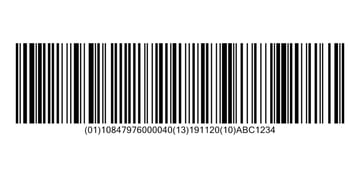Supply chain transparency is often used as a blanket term for visibility into specific times, processes, people and locations that comprise essential components of a product’s journey. Technical standards have been created and iterated to codify these details, enabling businesses to exchange information that is interoperable between entities with increasing specificity and ease.
As more businesses adopt technologies to assist in digital information sharing, such as Electronic Data Interchange (EDI), convergence around information types and formats is imperative across industries. For the food industry, GS1 Standards have become the foundation for many aspects of identifying, capturing, and sharing data. One such standard, the Global Location Number (GLN), is essential for any food business getting their digital house in order to be ready for initiatives such as the New Era of Smarter Food Safety.
What is a Global Location Number (GLN)?
The Global Location Number (GLN) is a 13 digit globally unique identifier for any location, physical, operational, or legal, that needs to be identified for use in the supply chain. Once identified, GLNs can then be used for retrieving information from databases.
GLN Example: 0847976000005
- 0847976 = FoodLogiQ GS1 Company Prefix: the GS1 Company prefix is a unique identifier for your company assigned by GS1, used globally. Learn how to get your GS1 prefix using the GS1 US starters guide.
- 00000 = Location Reference Number: this is allocated by the prefix owner in reference to a specific location.
- 5 = Check Digit: the Check Digit is calculated by a standard algorithm to help ensure integrity. There are several tools available to create them. For example, GLN is an attribute in FoodLogiQ Connect, and the system can automatically generate the check digit in accordance with the GS1 Standard.
The information provided by GLNs are used to identify physical locations, operational entities and parties with increased efficacy. GLNs “unlock the door” to critical location information, needed by trading partners in business processes today, and sets the foundation for being FSMA-ready, by standardizing the identification of locations across the supply chain.
For products, companies will assign a Global Trade Item Number (GTIN). These consist of three components: 1) Your GS1 Company Prefix, 2) Item Reference Number, 3) Check Digit. Both GLNs and GTINs are key components used across supply chain management, and are required to participate in networks such as the Global Data Synchronization Network (GDSN) to establish data ownership across parties and locations. This enables synchronization and increased transparency throughout the food system.
The Benefits of Using Global Location Numbers
GLNs are used by distributors, manufacturers, business units and locations, suppliers, as well as other stakeholders in the supply chain. GS1 notes that “when GLNs are assigned by all members of the supply chain, visibility is possible into the current and past location of the item or shipment.” And this level of food transparency is more important than ever, with shifts in consumer sentiment indicating the public demands for clarity around the food product journey are increasing, while leniency around food safety incidents and drawn-out recalls is vanishing. Standard attributes, such as Global Location Numbers enable companies to administer targeted product removals with greater ease, often resulting in sizable cost reductions.
In addition to increasing transparency, GLNs help normalize data throughout the food industry, reducing duplicate data, confusion over attributes that vary between entities, and ensuring key information is stored across parties. As a global standard, GLNs also enable international exchange and simplify exchange for entities sourcing from diverse verticals, like retailers.
Creating, Sharing and Capturing Global Location Numbers
Rules for assigning GLNs exist across four, often overlapping, categories: legal entity, physical location, function and digital location. Read more about GLN allocation rules here. To participate in this standard usage, businesses need a GS1 Company Prefix prior to designating location number and creation of the applicable check digit number. Once these components are in place, GLNs may be rendered in numerous formats, including barcodes or RFID tag for easy, digital capture. These labels or tags can be scanned into supply chain management platforms to then store and share this data with business partners and regulatory bodies. Read the GS1 US resource on how to identify location with GLNs for more information.
FoodLogiQ is a GS1 Solution Partner. The FoodLogiQ Connect platform was built on GS1 standards in order to deliver true farm-to-fork traceability with standardized product and location information. Our traceability solution provides visibility at every step throughout the food supply chain. We have multiple GS1 certified staff members ready to help you get started today.
Other posts you might be interested in
View All Posts
Supplier Compliance
5 min read
| January 15, 2020
What is a GS1-128 Barcode?
Read More
Trustwell News
8 min read
| May 18, 2021
Delivering Global Quality and Sustainability Through Tech-Enabled Auditing with Red Lobster
Read More
Food Safety
8 min read
| October 13, 2022

